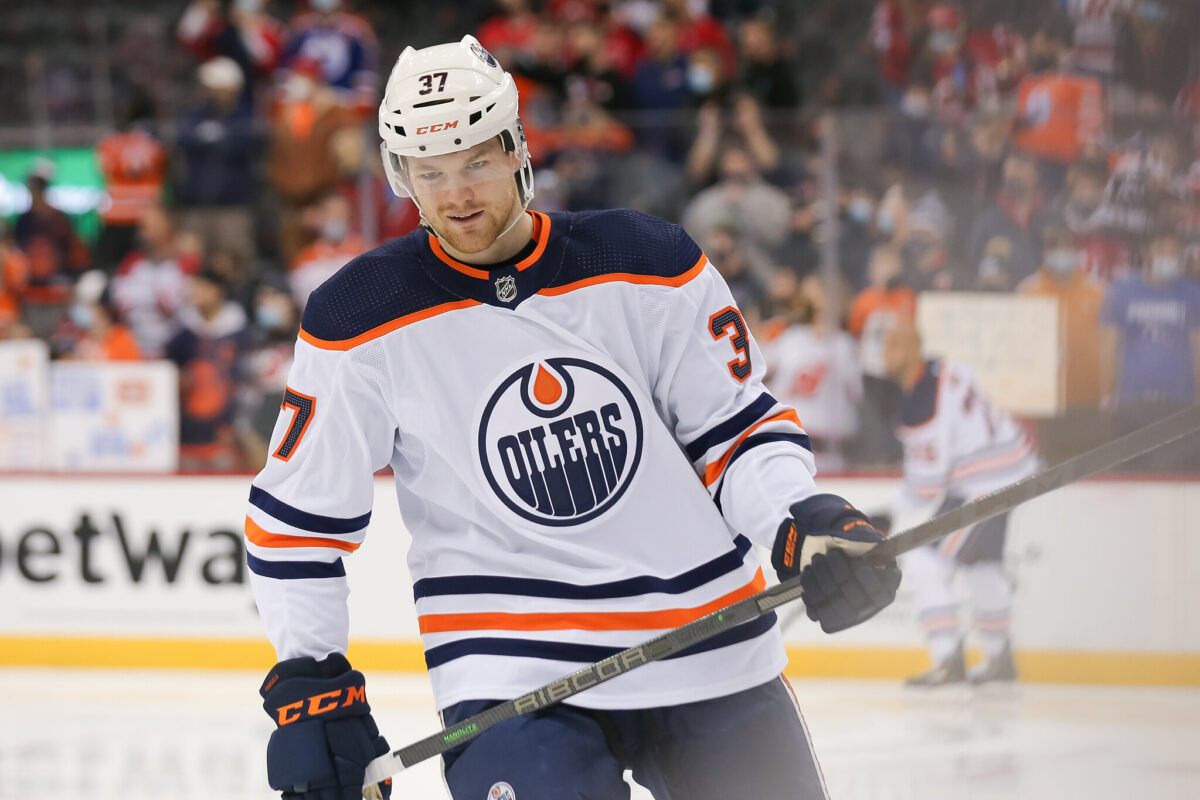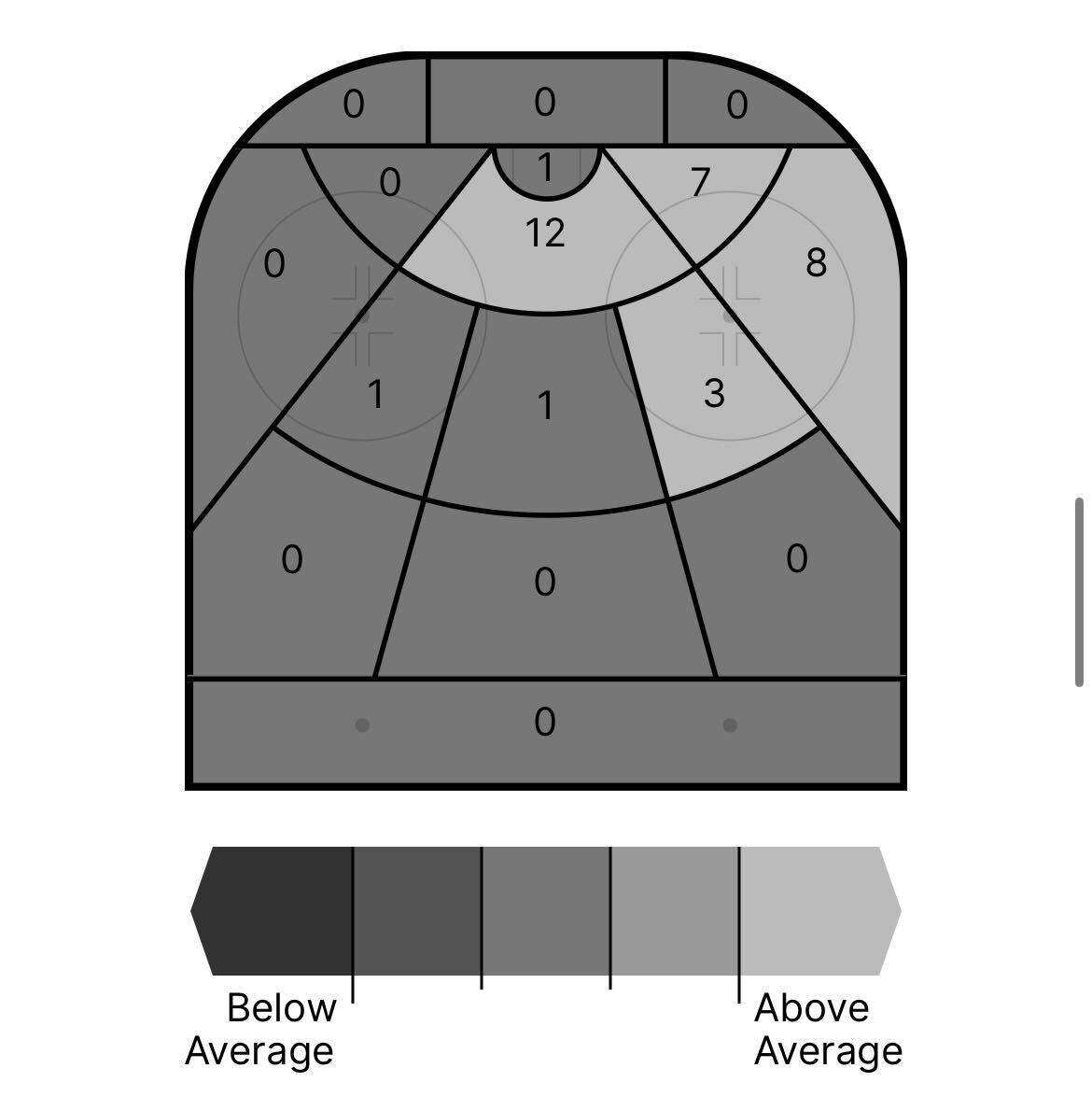The Edmonton Oilers have kept their top line of Connor McDavid, Zach Hyman, and Ryan Nugent-Hopkins together for most of the season. However, they have frequently experimented with the second line, typically centred by Leon Draisaitl. Out of all the wingers featured alongside Draisaitl this season, none have been a more unlikely duo than Ryan McLeod and Warren Foegele.

Before this season, Foegele had eclipsed 30 points just once in his NHL career, and McLeod had never done it. Despite lacking a proven track record of producing offence, both players have surprisingly held their own in the top six this season. Is this a line the Oilers should keep together long term?
Ryan McLeod‘s Strengths & Weaknesses
Often criticized for a lack of offensive production, McLeod doesn’t get enough credit for being one of the best defensive forwards on the team. He ranks first among Oiler forwards in fewest goals-against per hour (GA/60). While you need players who can score the win hockey games, having guys who can prevent them is also crucial. McLeod utilizes his speed to retrieve loose pucks and transport them out of danger. Take a look at his percentiles compared to the rest of the league in some key retrieval and exit stats:
- Retrievals per Hour: 82%
- Exits off Retrieval percentage: 85%
- Exits With Possession percentage: 84%
The trend continues with zone entries, where McLeod ranks in the 83rd percentile in controlled-entry percentage and 68th percentile in controlled entries per hour. Simply put, McLeod is fantastic at getting the puck from the defensive zone to the offensive zone with possession.
Maintaining puck possession and offensive zone time has also been a strength for McLeod. He Ranks third among the Oilers’ current forwards in on-ice shot attempt share and unblocked shot-attempt share. So, if he drives puck possession, why hasn’t this translated to consistent offence? Unfortunately, McLeod’s game has a few significant flaws. Most notably, he doesn’t go to the net nearly enough. How often have we seen him fly into the zone with possession only to circle the net instead of driving to the slot? It happens all the time, and that’s a bit of an issue since he doesn’t possess a lethal shot. He seldom scores from long range, so he must go to the net to be productive. Take a look at this chart, which maps the location of his goals this season:

As you can see, almost all of McLeod’s goals come from the low slot. He’s a talented player who can score around the net but doesn’t find himself open there very often. This is where Draisaitl comes into play. He can score from any angle and is much more dangerous on mid-range opportunities, thanks to his quick and accurate shot. He also draws the attention of defenders, which can provide openings for McLeod to go to the net.

Overall, their playstyles work well in tandem when they’re both on their games. McLeod excels at defending, transitioning the puck into the offensive zone, and maintaining possession. More time spent in the offensive zone leads to more opportunities for Draisaitl to make plays. Since McLeod has difficulties getting the puck to the net, Draisaitl can do the heavy lifting and create space to make it easier on him.
Warren Foegele Needs a finisher
One thing differentiating Foegele from McLeod is that he will never shy away from taking the puck to the net. He ranks first on the Oilers in shots per hour, and a massive chunk of them are from the low slot. The flaw with Foegele’s offensive game doesn’t come from a lack of shooting but from a lack of efficiency, particularly in the low slot. When he gets too close to the net, Foegele tends to throw the puck straight into the goalie’s pads. While he only has a 9.1% shooting percentage from the low slot, he shoots 21.4% from the high slot.
Related: Oilers Need To Re-Sign Warren Foegele
When Foegele, McLeod, and Draisaitl are all on the same line and playing to their strengths, it creates an ideal situation because each player is most efficient from different areas on the ice. Draisaitl can score from farther distances and sharper angles, McLeod is dangerous near the net, and Foegele is dangerous in the high slot and he creates rebounds when he’s closer to the net. It gives the opposing defenders numerous different threats to worry about.
Should the Oilers Keep This Line Together Long Term?
The McLeod, Draisaitl, and Foegele line has outscored the opposition 12-4 together this season at 5-on-5. This line had their first lengthy stretch together from late December to mid-January. On Jan. 12, they had a fantastic 78.42 goal share (GF%) and a 63.38 expected goal share (xGF%) on the season. They were broken up for almost two months and then reunited over the past four games. In this latest stretch, the trio has a 66.02 GF% and 44.99 xGF% in just under 39 minutes together. While they’ve still outscored the opposition 2-1, there has been a 37.2% drop in high-danger chances generated per hour compared to before. Will they break out of this recent slump and return to form? That question is only part of the puzzle when it comes to this line’s future.
Discovering how newcomer Adam Henrique works with Evander Kane on the third line will greatly influence future lineup decisions. They managed to set up Connor Brown for his first goal of the season against the Washington Capitals but were ineffective against the Colorado Avalanche. There are some legitimate concerns with a Kane-and-Henrique duo lacking the speed to be successful against teams like the Avalanche. If head coach Kris Knoblauch sees it that way, he will likely move one of them up to Draisaitl’s wing eventually and return McLeod to the third line. While we don’t know exactly what the lineup will look like come playoff time, we do know that the addition of Henrique and the emergence of Foegele and McLeod as legitimate second-line options gives the Oilers versatility with their forwards. Now, it’s all about finding the best mix.
